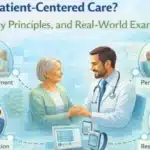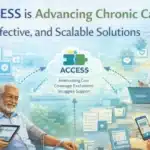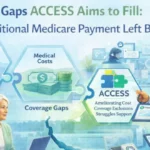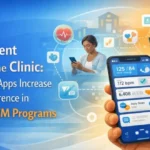Top 10 Features of Best Remote Patient Monitoring (RPM) Software
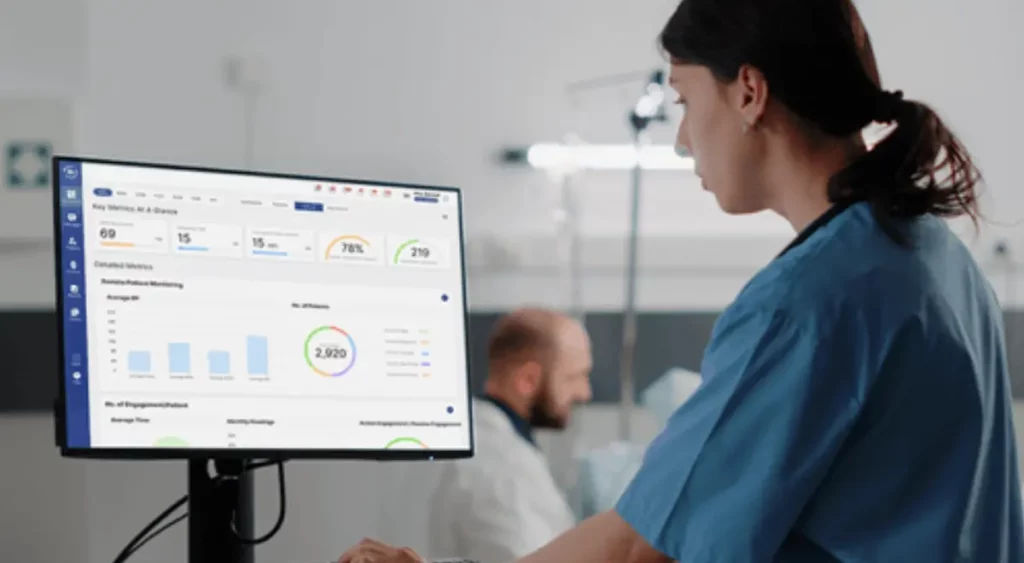
With the remote healthcare industry evolving continuously, Remote Patient Monitoring (RPM) has come up as a reliable platform focused on improving patient engagement, enhancing healthcare provider experience, and streamlining the remote care delivery model. With more and more healthcare organizations implementing remote patient monitoring at their practice, choosing the right RPM software is significant in maximizing reimbursements and making informed decisions.
In this blog, we are discussing the top features you must look for, when implementing the best remote patient monitoring software at your practice:
Table of Contents
Toggle1. Built-in Compliance & Regulatory Standards
Meeting compliance requirements is essential in the remote healthcare industry, especially when it comes to care management and patient monitoring software. Healthcare software and RPM devices must meet a number of compliance requirements and laws, including HIPAA, FDA, and SOC 2. These frameworks help ensure compliance with legal and privacy obligations.
All healthcare software companies and service providers must follow HIPAA requirements to protect patient data confidentiality, integrity, and availability. Make sure the platform or software you choose fulfills compliance requirements and strives to protect and secure patient data.
2. Open API for EHR Integration
RPM software should integrate, link, and interoperate with an organization’s existing Electronic Health Record (EHR) system. EHR integration means that RPM data, such as patient vital signs and demographic information, flows directly into your EHR, syncs in near real time, and is immediately linked to RPM CPT codes.
This helps in centralizing and organizing patient data, making it more accessible. When choosing RPM software, look for the one offering an open Application Programming Interface (API) and supporting data integration standards such as HL7 and FHIR. Remote patient monitoring companies, such as HealthArc provides EHR integration with over 20+ EHRs and 40+ medical devices to ensure smooth data synchronization.
3. Customizable Interface for Caseload Management
An ideal remote patient monitoring software should assist physicians in managing a large amount of patient data for predictive analytics and timely interventions. A configurable caseload management interface can help healthcare providers in categorizing their patients using groups, tags, filters, and other markers.
This customization helps businesses with caseload formatting and workflows, standardizing the monitoring process, and making it easy to understand for all.
4. Data Analytics and Dashboards
Since patients record their readings via RPM devices quite often, this generates large amounts of data, but data is useless if it cannot be accessed when needed. HealthArc RPM includes built-in data analytics capabilities that help care providers in identifying and tracking trends in a patient’s health records over time.
These include predictive analytics capabilities and data visualization dashboards that allow hassle-free decision making.
5. Unified Healthcare Platform & Central Hub
A unified digital health platform ensures providers can provide various remote care programs under a single platform. When RPM software is integrated with an organization’s EHR, it can establish a single access point from which providers can handle several patients at once.
HealthArc offers device order management- ordering and tracking of device orders to patient as well as provider locations; and device inventory within the platform..
6. Smart Alerts/ Notifications for Providers
A good RPM software generates automated alerts and notifications that are sent to a provider whenever particular thresholds or trends are observed. This allows providers to contact their patients right away, inquire about their well being, make timely interventions, and necessary modifications to a treatment plan.
The ability to notify nurses and physicians as soon as a specific threshold is breached is one of the most prominent features of remote care software; a healthcare provider must look into.
7. Patient Engagement Tools
Patient engagement via audio/ video calls, SMS, patient facing app plays a significant role in improving healthcare outcomes. When a patient understands their condition and know how to manage their symptoms to avoid deterioration and healthcare emergencies, they may feel more in control of their treatment.
Self-efficacy in the form of enhancing patient accountability and encouraging patients to take charge of their health improves patients’ quality of life.
8. Report Generation
Since the majority of RPM software are designed to capture a large quantity of data, they are favored by healthcare providers who need to provide continuous monitoring services to their patients.
Providers can evaluate this data in near real time and via automatic reports generated by software; they can monitor their progress con sistently. RPM reports might cover anything from trends in a patient’s status to factors that may affect their health. It is advised to opt for software that generates automated reports. HealthArc’s provides analytics at a program level, practice level and clinical insights.
9. Encryption and Data Security
Since patient data is always at the forefront of the remote care technology, a good remote patient monitoring software must guarantee that only the providers have access to and protect their patients’ health information.
Data security and encryption standards are critical for successful remote patient monitoring outcomes. It not only safeguards sensitive patient information from unauthorized access but boosts patient engagement, patient-provider communication, and effectiveness of RPM program.
10. Reimbursement & Billing Assistance
An effective RPM platform should support automated workflows that align with CMS reimbursement structures, streamlining documentation and billing processes for qualifying services. It must offer efficient reimbursement capability for all remote care services and automatically bill for specified RPM CPT codes.
This automates and streamlines invoicing, saving time on manual entry and making it easy to scale and track reimbursements.
Key features every RPM software must have in 2025
- Seamless EHR integration
- Real‑time analytics
- Secure HIPAA‑compliant communication
- CPT‑ready billing workflows
- AI‑powered insights
Conclusion
Choosing the best RPM software requires careful evaluation of a number of parameters, including functionalities, integration capabilities, user experience, compliance, scalability, customer support, and cost. Understanding your practice’s goals and patient assessment needs will allow you to choose efficient remote care software that improves patient care and operational efficiency.
HealthArc stands out as a leader in the remote healthcare industry with its AI-powered advanced data analytics, seamless integration, audio/video functionality, and HIPAA and SOC2 compliant software. With a patient-centered platform that offers compatibility for comprehensive healthcare programs, better monitoring, and improved outcomes, HealthArc’s RPM software is proudly shaping the future of remote patient care.
Schedule a demo today to explore how HealthArc’s RPM platform can support your remote care goals or call us today at (201) 885 5571 to create a personalized RPM solution for your organization.
Frequently Asked Questions (FAQs)
Remote Patient Monitoring (RPM) software is a type of software technology that aids healthcare providers in managing patients’ vital signs, health information, and other relevant data by improving information access and retrieval outside of clinical interfaces.
RPM aids in engaging patients and delivering proactive, tailored service while optimizing operational functional service.
Important features include:
- Tracking data in real-time
- Connecting with devices
- Customizable dashboards
- Secure data encryption that meets HIPAA standards
- Tools for engaging patients both actively and passively
- The ability to work with the healthcare facility’s electronic health records (EHR) system
RPM provides ongoing real-time monitoring and proactive reminders to foster effective treatment and early detection of health issues that should be addressed comparatively early; this is especially beneficial in managing chronic diseases and encourages patients to take more control of their healthcare.
Select an RPM system that does not compromise the healthcare organization’s other systems, guarantees multi-level data protection, has customizable reports, allows for multiple devices, and is tailored to the evolving demands of the practice.
Most Recent Blogs
Categories
Related Blog
- November 26, 2025 | Read Time: 14 mins
Return on Investment (ROI) of Remote Patient Monitoring (RPM): A Complete Guide for ACOs and Healthcare Organizations
The U.S. healthcare system continues its transition from fee-for-service models to value-based...
Learn More- November 24, 2025 | Read Time: 15 mins
Common RPM Pricing Models for Providers: A Profitability-Focused Guide
Remote Patient Monitoring (RPM) has rapidly emerged as one of the leading...
Learn More- October 23, 2025 | Read Time: 12 mins
How RPM Devices Improve Hypertension and Diabetes Outcomes in Medicare Populations
Remote patient monitoring (RPM) is transforming chronic care for Medicare beneficiaries. CMS...
Learn More